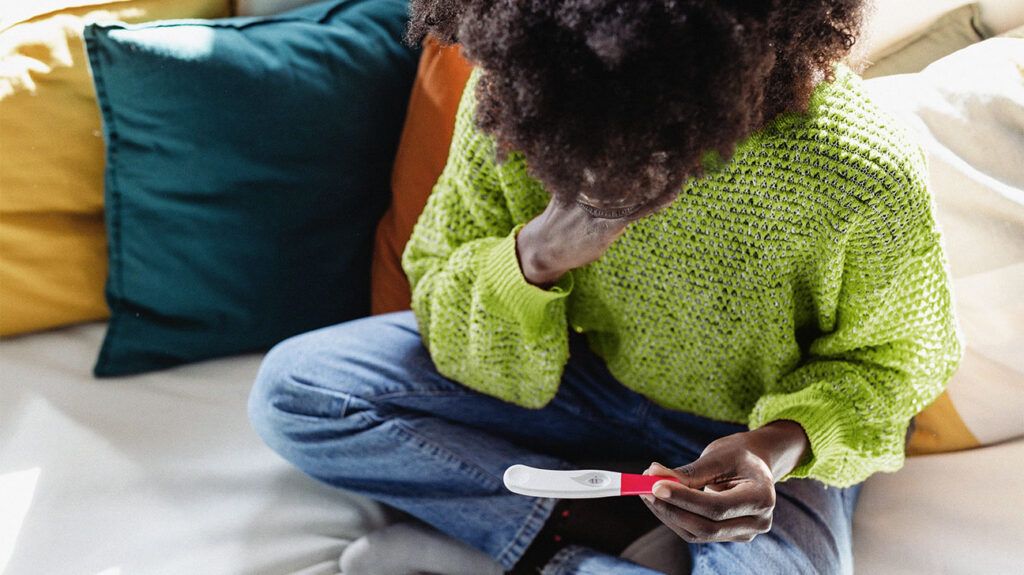Many people living with endometriosis can get pregnant without medical assistance. However, endometriosis can cause infertility, and some people have difficulty conceiving.
Endometriosis is one of the leading causes of infertility, which health experts define as an inability to become pregnant after trying for
While it is possible for someone with endometriosis to conceive without medical assistance, fertility treatments can help. For example, a doctor may prescribe medication to assist with ovulation or may recommend a procedure such as intrauterine insemination (IUI) or in vitro fertilization (IVF).
This article discusses whether and how a person with endometriosis can conceive naturally and what kinds of medical assistance are available to help people with endometriosis become pregnant.

Some researchers estimate that
A person’s chances of conceiving naturally may depend on how severe their endometriosis is and where in their body endometriosis tissue is growing.
Researchers estimate that about 50% of people with mild and 25% of people with moderate endometriosis are able to conceive naturally. However, these statistics apply only to those who do not experience infertility.
The best age for getting pregnant is a personal decision that will involve an individual’s specific circumstances and wishes. However, as a person gets older, fertility naturally decreases and the chances of experiencing pregnancy complications increase.
A person younger than 30 years of age who does not have infertility has an
At age 40, the likelihood of becoming pregnant within a year is 44%. People older than 35 also have an increased risk of complications such as miscarriage, stillbirth, and preterm labor.
With these statistics in mind, there is no perfect age for someone with endometriosis to get pregnant. Overall, the chances of becoming pregnant decrease with age. For this reason, some doctors may advise people with endometriosis to try to get pregnant earlier than those without endometriosis might.
Several factors can affect a person’s chance of conceiving with endometriosis, and a doctor may suggest a different treatment plan depending on whether the person wants to become pregnant.
Surgery is a common treatment option. During the procedure, a surgeon removes or destroys endometriosis tissue and lesions. This
However, this surgery
Certain lifestyle strategies may also benefit people with endometriosis by reducing inflammation in the body. There is
- eating plenty of fruits, vegetables, legumes, whole grains, and fish
- limiting consumption of red and processed meats
- limiting sugar intake
- limiting refined carbohydrate intake
- limiting saturated and trans fats
Other lifestyle and dietary habits might also increase a person’s chances of conceiving but are not specific to those with endometriosis. These include:
- making efforts to maintain a moderate weight
- engaging in regular physical activity
- finding healthy ways to reduce or manage stress
- avoiding smoking
- avoiding alcohol consumption
Assisted reproductive technologies (ART) offer the
In vitro fertilization (IVF) / intracytoplasmic sperm injection (ICSI)
IVF and ICSI can help people with endometriosis become pregnant. Some research suggests that doctors may not be able to retrieve as many eggs from the ovaries as in those without endometriosis.
Learn more about IVF and ICSI.
Gonadotropin-releasing hormone (GnRH) agonist
This is a medication that stops the body from producing the hormones responsible for ovulation, which cause endometriosis tissue to grow. This results in a temporary menopause.
Although many people living with endometriosis can conceive without medical assistance, the condition does reduce a person’s chances of becoming pregnant.
According to an older
Overall, the infertility rate in people with endometriosis is
ART methods such as IVF can increase success rates. The results of a 2021 study showed that the live birth rate for people who received endometriosis treatment and IVF increased by about
Endometriosis symptoms can be difficult to cope with and can pose some challenges for people who are trying to conceive.
It is possible that being unable to have sex regularly due to pain during intercourse is one of the causes of infertility rates among people with endometriosis. Therefore, it is important for people with endometriosis to communicate with their partners and to engage in sex only if both parties are comfortable doing so.
Tips for managing symptoms while trying to conceive include:
- seeking advice from a doctor
- tracking the menstrual cycle and associated symptoms
- engaging in daily moderate exercise
- finding healthy ways to manage stress and anxiety
- using pain relievers according to a doctor’s recommendations
A doctor can help a person with endometriosis plan for pregnancy and give advice based on individual circumstances.
A person may want to ask questions such as:
- When is the best age to try to get pregnant?
- What is the likelihood of conceiving without medical assistance?
- When is the best time in the menstrual cycle to have sex if pregnancy is the goal?
- When is it necessary to consider treatment or ART?
- Is it necessary to change or stop current treatments?
- Are there alternative treatments that can increase the chances of becoming pregnant?
- How much will ART cost, and how long does the process take?
- What are the chances of becoming pregnant using ART?
Although infertility rates are higher among people with endometriosis, it is possible for many people to become pregnant without assistance.
If a person is experiencing infertility, ART methods such as IVF may be a suitable option to help them become pregnant, depending on their individual circumstances.
Trying to get pregnant with endometriosis can be daunting, but a doctor can provide guidance and assistance for conceiving either with or without medical assistance.
